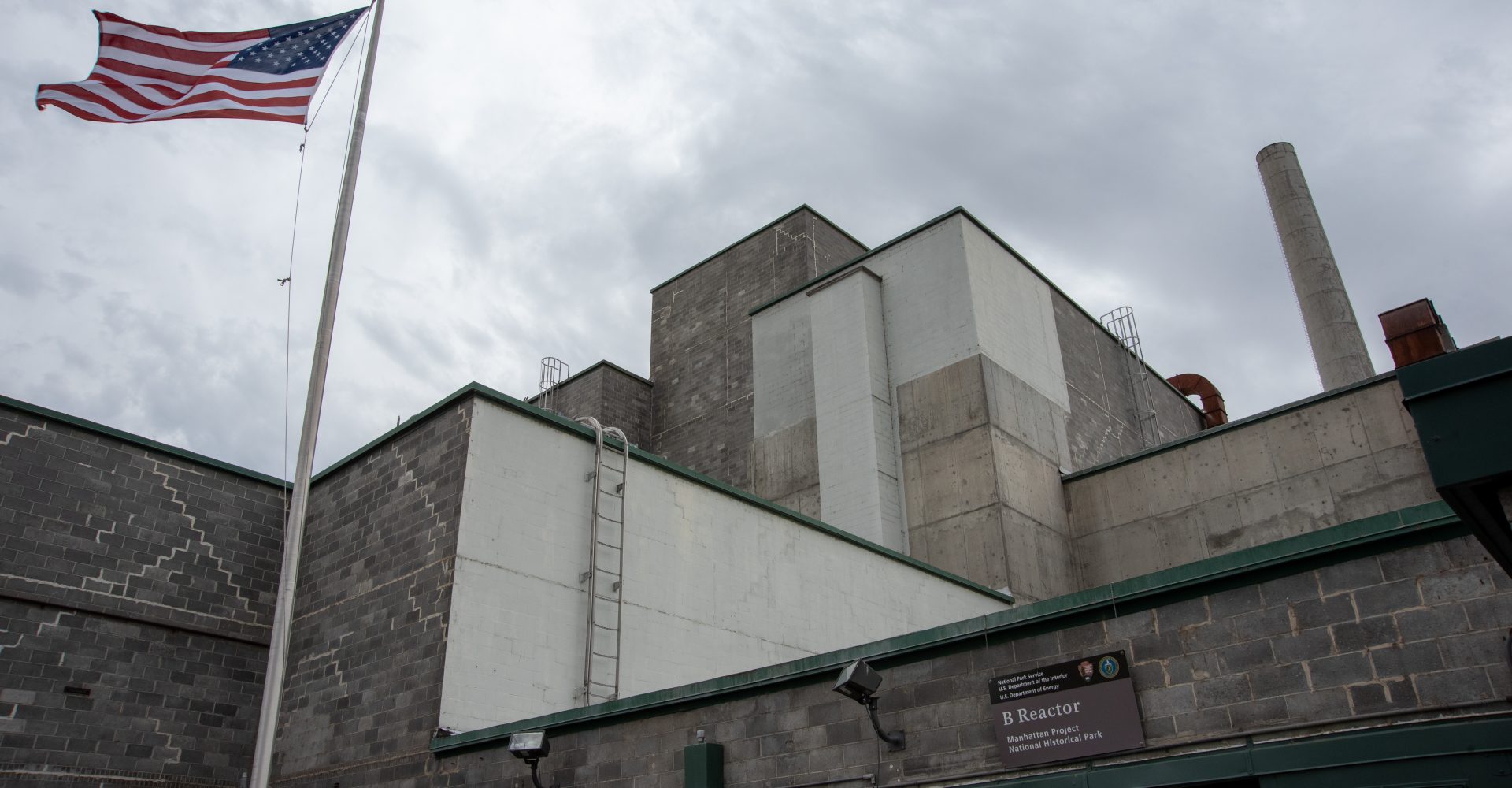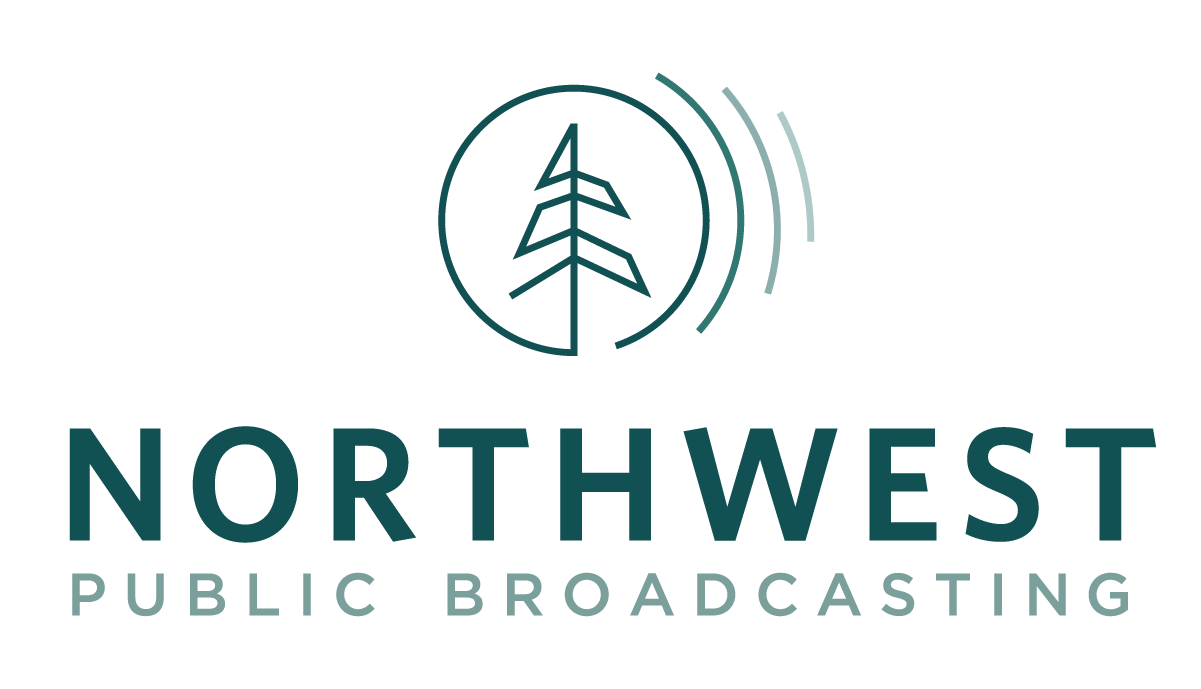Hanford
The Hanford Site
An Exploration from NWPB and Oregon Public Broadcasting (OPB)

The Hanford site, located in southeast Washington state, is one of the world’s largest and complex environmental cleanup sites. There are 56 million gallons of radioactive waste stewing in aging underground tanks. It’s all the leftovers from plutonium production for bombs during World War II and the Cold War.
Northwest Public Broadcasting and Oregon Public Broadcasting’s show “Think Out Loud” worked together to bring special coverage about the Hanford site. In a surprising twist, Hanford is surrounded by more than 195,000 acres of protected lands. It offers homes to rare beings, like the bladderpod plant and protected ferruginous hawks.
Learn about the legacy of the Hanford site, how clean up is going and stories from those who live in the nearby Tri-Cities, including the U.S. Department of Energy’s top manager for Hanford, leaders of the Yakama Nation, scientists, wildlife experts, a former Washington Poet Laureate who grew up in “Atomic City” and many others.
Before and after Hanford: Indigenous ties to the land
Long before the Hanford nuclear reservation, the land was home to Native American tribes. The Yakama Nation has strong ties to Laliik — or Rattlesnake Mountain — and Gable Mountain on the Hanford cleanup site. They are religious sites for the Tribes, and the whole area is ceded land for the Yakama Nation. The lands around Hanford were also used for village sites, gathering, fishing, hunting and social celebrations. But the Tribes were forced off their lands during World War II, and only in the past year have they been able to start to return to hunt and gather there. The Nation is trying to educate its youth and fully lean into being part of the formal efforts to clean up the 56 million gallons of radioactive waste stored on the site.
Hanford History Project documents the legacy of the Manhattan Project and Cold War
The assistant director at the Hanford History Project sits down with us to share more about the larger history of the site and the lesser known stories, including the Black and low-income families who worked at Hanford.
Farmer grows 350 fruits and vegetables in Hanford’s shadow
Alan Schreiber farms in the shadow of the massive cleanup site at Hanford. Schreiber says so far there hasn’t been a problem and he rarely thinks about it. He joins us from our remote studio on the campus of Washington State University Tri-Cities to talk about it.
Pacific Northwest National Lab scientist researching glass to bind up Hanford radioactive waste
We sit down with a Pacific Northwest National Lab scientist researching how glass can be used to safely bind up Hanford radioactive waste.
Hanford Reach National Monument area protects more than 195,000 acres of nature and wildlife
We get a first-hand tour of the Hanford Reach National Monument from the Washington Fish & Wildlife regional director for south central Washington.
Former Washington poet laureate from Hanford area on how the ‘Atomic City’ shaped her life
Seattle poet Kathleen Flenniken grew up in Richland and worked as a civil engineer at Hanford in the 1980s. She served as Washington State Poet Laureate from 2012 to 2014. In her first year as poet laureate, she published a collection called Plume, which deals directly with how her Hanford area upbringing influenced her. The book explores the history of the site, the death of her best friend’s father from a radiation illness, and her childhood in “Atomic City.” Flenniken sits down with us from the campus of Washington State University Tri-Cities.
Hanford Department of Energy manager on tank waste, vitrification and overall clean up progress
The 56 million gallons of radioactive waste created from decades of plutonium enrichment at Hanford are stored in 177 massive, underground tanks on 18 different “farms” spread out over the 580 square miles of the nuclear reservation in Washington state. Most of the tanks are single-shelled, but 28 of them are double-shelled, which helps prevent waste from getting into the ground. Each tank holds between 55,000 and a million gallons of toxic waste.
Winemaking is central to the Hanford region
JJ Williams is the third-generation of his family in the wine business out of Red Mountain – one of the world’s premier vinicultural areas outside of Richland, Washington. But before the wine business, his family first put down roots in the Mid-Columbia region to work at Hanford. During the Manhattan Project, Williams’s great grandfather worked at the site, and then his grandfather worked on what’s called the Fast Flux Test Facility. It’s September now and crush is on – meaning that all the grapes are coming in to be pressed and fermented into wine at Kiona Vineyards. Williams recently got the distinction of being named in Wine Enthusiast’s 40 under 40. We sit down with him in our remote studio on the campus of Washington State University Tri-Cities.
Hanford radiation effects on people and the environment
We’ve talked a lot this week about life and work specifically at Hanford, but not all of the waste stayed there. In the rush to process plutonium at Hanford, plant operators expelled radioactive byproducts into the local atmosphere and waterways. People who were affected by these radioactive toxins call themselves “Downwinders.” Northwest Public Broadcasting senior correspondent Anna King, who has been reporting on Hanford for over 20 years, joins us to talk about the people who were affected by radiation from the Hanford site in previous decades.
It’s been 80 years since the world’s first industrial-scale nuclear reactor went live at Hanford
The National Park Service runs three different sites related to the World War II Manhattan Project. The one on the Hanford Nuclear Reservation in southeast Washington was the first full-scale nuclear reactor in the world. The B Reactor features hundreds of nozzles capping the metal process tubes on the reactor face and even a mint-green control room with all its 40s-era instrument panels. But it’s hearing about the human stories of struggle that make the history come alive. September 26 marks 80 years since the B Reactor first went online. We get a tour from Terri Andre, a volunteer docent at the Manhattan Project National Historical Park at Hanford.
Hanford through the lens of geologic time
Bruce Bjornstad gives us a geologic tour from an outlook on the White Bluffs overlooking the Columbia River and Hanford.
Hanford Challenge is a watchdog nonprofit focused on transparency and cleanup process at Hanford site
The Hanford nuclear reservation produced more than 400 billion gallons of contaminated waste over its decades of operation. Workers have been sickened over the years, and some have successfully sued the Department of Energy with help from watchdog groups, including Hanford Challenge. The nonprofit advocates for whistleblowers and workers on the site, and monitors the clean up process, which has been going on for decades. The State of Washington and federal agencies including the U.S. Department of Energy recently agreed to an update on their cleanup plan, and the public comment period on that agreement closed Sept. 1. Miya Burke, Program Manager for Hanford Challenge, joins us.








